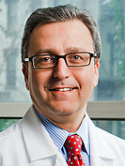| Abstract: |
Supraventricular arrhythmias or supraventricular tachycardias (SVT) frequently occur after thoracic surgery and have been associated with prolonged hospital stays. The reported incidence of supraventricular arrhythmias in this patient population ranges from 9% to 40%, with factors such as extent of surgery markedly influencing the incidence. SVT has been reported to be 12% to 16% after lobectomy, 20% to 30% after pneumonectomy, and as much as 40% after extrapleural pneumonectomy for malignant pleural mesothelioma. Patients who develop SVT have a higher rate of intensive care unit admission and higher 30-day mortality. SVT occurrence appears to be an important marker of poor cardiopulmonary reserve in patients who developed significant morbidity after thoracic surgery. It is possible that the rate of SVT occurrence increases proportionally with extent of neural trauma to cardiac plexus structures in older patients. The timing of SVT onset is likely related to the high adrenergic activity of the postsurgery state and the resolution of a graded inflammatory process corresponding to the amount of blunt or sharp surgical trauma to sympathovagal nerve fibers innervating the sinus node. This article will focus on new issues leading to improved understanding of the pathophysiology and mechanisms of SVT after surgery. New approaches directed at prophylaxis and acute therapy of SVT are also discussed. © 1997 by W. B. Saunders Company. |



